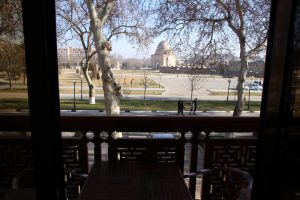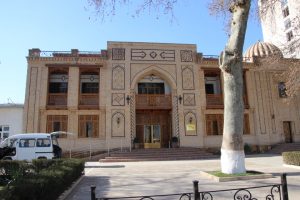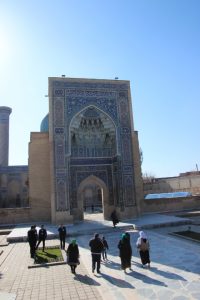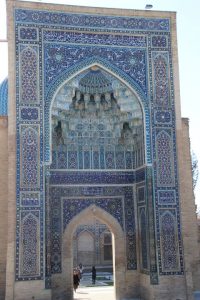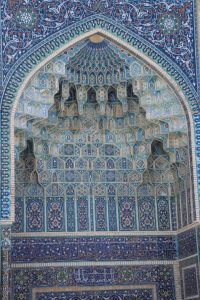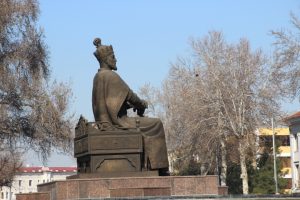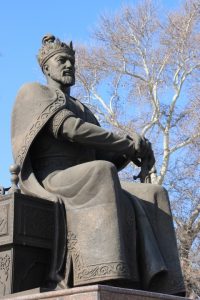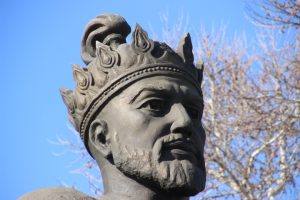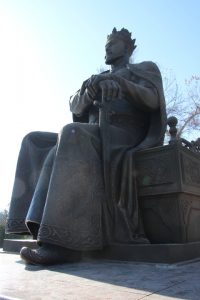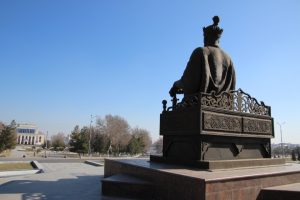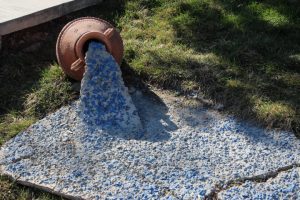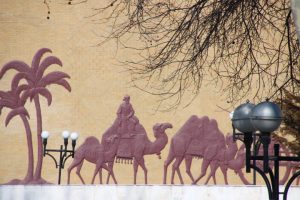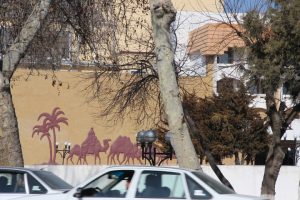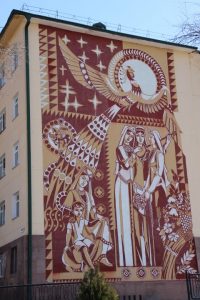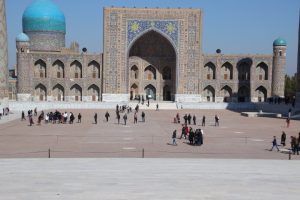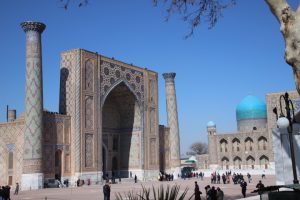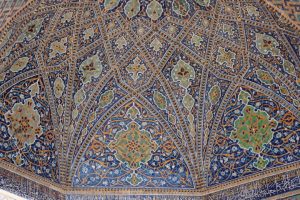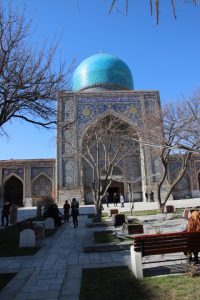We are in a small hotel called The Malika Prime which is located in parkland overlooking the Gur-Emir-Amir Mausoleum which is the burial place of Timur, his two sons and two grandsons. It has a fluted azure dome.
Close by is the statue of Amir Timur. He played a major role in forming Samarkand as an epicentre for Central Asian economics and culture.
The city is one of the regions oldest settlements. Founded in the 5th century BC it was already a multicultural walled capital of the Sogdian Empire when it was captured by Alexander the Great in 329BC. The city was also by now at the crossroads of Silk Road routes to and from China, India and today’s Middle East bringing with it trade, craftsmen, languages, religions, scientific ideas as well as fruit, spices and textiles.
The city changed hands many times before being ransacked by Ghengis Khan in 1220. In 1370 however Timur decided to rebuild and make Samarkand his capital. His grandson Ulugbek ruled until 1449. The city again fell into decay and was only restored in 1868 by being linked to the Russian Empire by the Trans-Caspian railway.
We visited the Registan which was the medieval city’s commercial centre and the plaza was probably the bazaar. The complex has three grand buildings which are some of the oldest preserved medressas and are a majestic mass of mosaic and well proportioned spaces. The fact that they are still standing after frequent earthquakes that rock the region is a testimony to the craftsmanship of their builders. They too have at times fallen into disrepair but the Russians have worked hard to restore these treasures. We were inside one of the medressas when we were invited to see black and white photographs of the complex in the late 19th and early 20th century when some of it lay in ruins.
